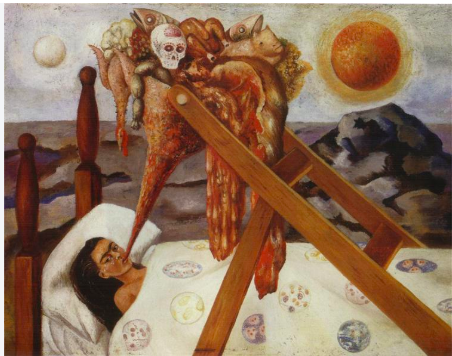Art and Medicine. Medicine and Art. At first glance, they don’t seem to be good partners. They don’t seem to have anything in common. But, trust me, they do. I’m sure you’re thinking that those serious doctors with white coats and aseptic clinics have nothing to do with Salvador Dali or Vincent Van Gogh. Medicine, however, is a lot more than just scary hospitals and needles. Medicine is about sharing moments with a person in a vulnerable moment of their life. It’s about seating next to that person, who has a name, a family, good and bad memories… and trying to help them. Medicine is about helping others, not just by treating them, but also by accompanying them through pain, depression, uncertainty and death. These are moments and emotions which are sometimes impossible to put into words, and this is why a lot of artists have tried to capture these feelings through their work: it acted as a form of therapy. So Art can heal and Art can help Medicine understand the patient’s feelings, and by doing so, gain empathy.
Have I convinced you already that Medicine and Art are very good friends? Great! To illustrate this, on this first post, I’d like to talk about how illness and pain have influenced the work of Mexican artist Frida Kahlo, who said: “My painting carries with it the message of pain.”

Frida was born in 1907 in Coyoacán, Mexico (in the famous “Casa Azul”). Did you know that she wanted to be a doctor? In 1922, she started studying natural sciences in the National Preparatory School with the desire of becoming a doctor someday. However, when she was 18 years old, she was heading to school and she had a traffic accident that changed her life forever. She had multiple bone fractures, affecting her pelvis and spine. Her recovery was very long and painful and she had to spend months in bed. Her ideas of becoming a doctor went away. She was in pain for the rest of her life (she had 30 surgeries throughout her lifetime in an attempt to correct the damage) and she became addicted to painkillers and alcohol. This is why much of her work is related to suffering, loneliness and pain. In 1953, Frida’s right foot was affected by gangrene and doctors were forced to amputate her right leg below the knee. In her diary, Frida drew a sketch of her amputated leg and wrote: “Feet…what do I need them for if I have wings to fly.”
Frida died in the same place where she was born, in the “Casa Azul”, on July 13th, 1954. She was only 47 years old. The cause of death was officially reported as “pulmonary embolism”.
Frida Kahlo is an example of how Art and Medicine can work together. In the paintings below, Frida expresses her pain through art as a form of therapy. As she said, “I am not sick…I am broken… but I am happy to be alive as long as I can paint…”.
Miranda Rico

Henry Ford Hospital (The Flying Bed) (1932)

The Broken Column (1944)

Without Hope (1945)

The Wounded Deer (1946)

Tree of Hope, Remain Strong (1946)
